
GALLERY
ABOUT US
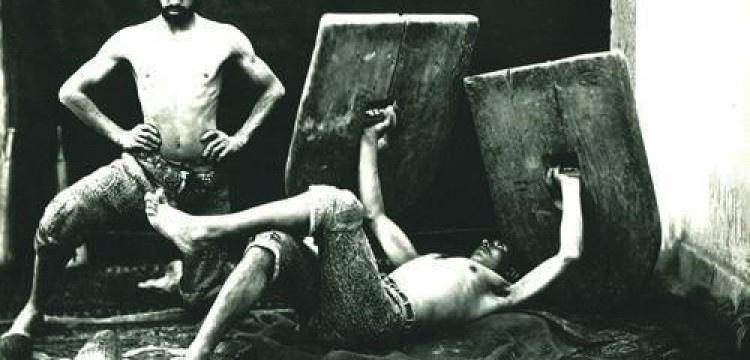
Also in Shahnameh From limited weapons such as bow and arrow, sword and blade, spear, dagger, lasso, helmet and armor, javelin, shield, axe, golden axe, defense equipment (self, helmet, armor, crown) and safety and protection equipment such as Armband, armband and waist band, each of which has been used by Iranian fighters and heroes for combat-military purposes.
Dr. Rahim Ramzaninejad 1 - Javad Mehrabani 2 - Bahram Bahramipour 3 - Amina Bidaryan 4 - Seyed Mohammad Niazi 5
Abstract
One of the methods of knowing the background and national roots as well as preserving the country's historical and cultural sports identity, examining the various dimensions of physical and military activities- It is a sport in ancient Iran. The purpose of the present research is to identify the types of tools and common sports disciplines in ancient Iran by using the content analysis of 9 volumes of Ferdowsi's Shahnameh and other related researches. In addition, verses from the Shahnameh were selected and presented for each of the sports tools and disciplines. Research findings showed that among 13 military tools – A sport that is repeated 3571 times in the Shahnameh, sword and blade, bow and arrow, with 26% and 20% of repetitions respectively, constitute the most important military-sports tools of Iranians. Among the 7 common sports that have been repeated 374 times in the Shahnameh, hunting, walking and polo were the most important physical activities of Iranians with 30%, 25% and 11% respectively. Among the 6 techniques commonly used in sports, most of the techniques were dedicated to wrestling. In addition, the examination of martial-sports characteristics of Shahnameh warriors showed that out of 4,755 repetitions of these characteristics, the characteristic of riding and horsemanship ranks first with 23% of repetitions. These findings show the diversity and skill of Iranians in using various sports-military tools and techniques. Keywords: Shahnameh, Military-sports skills and martial qualities.
Introduction
Physical education and Sports is a part of the country's cultural heritage, which is not separated from the historical and socio-cultural situation of Iran. Especially, by examining the education of ancient Iran, good information can be found about the national roots of physical education. Investigating the historical and cultural developments of Iran in order to recognize and respect the national identity and the foundations of the history of physical education and sports has a special place. However, many historical and intellectual fields of Iranian sports have not been fully identified. Investigating the state of physical education and sports in the past and especially in the pre-Islam era can be a strategy and perspective for the current and future athletes of the country. The information and findings of this research can be an introduction to getting to know the state of physical education and sports of that era, so that while preserving the heritage of the past, the transformation and evolution of that heritage can be promoted in the sports community. In the history and culture of education and training in ancient Iran, physical training and sports in the military dimension, health (health and strength) was a high priority when training, of course, the first priority related to the military dimension – It was martial arts (16). Because the basis and root of the formation of sports disciplines is military skills – Sports related. Iranians have even achieved countless successes in war and training brave and strong men by using these military skills and especially by using common tools and equipment in this culture (9). Iranians participated in various physical and martial activities and expanded the diversity of these activities (8). From the educational aspect, the training of all kinds of skills and sports disciplines existed in the educational system of ancient Iran in a practical and real way, and even its educational effect has been emphasized by various Islamic thinkers. Kikaus bin Iskandar spoke on moral issues and customs of practical life, including jokes, backgammon, and chess, going to the heat, hunting, playing polo, and keeping trust, etc. According to Kikaus, the curriculum should be comprehensive and something should be learned from each practice. The subjects that he explicitly mentions are Quran, ethics, politeness and knowledge, art and using the harp, riding and swimming. For example, Kikaus bin Iskandar says about the necessity of swimming, because after learning weapons, you must teach your child to swim, and in chapter 37 of Qaboosnameh, it is emphasized to give children a good name, and after teaching them the Koran, how to ride and how to use weapons. and teach them how to maintain it, then teach them swimming, archery, javelin, javelin, lacrosse, throwing and other arts (15). Researches on various aspects of Iranian sports history and culture are few and far between. These studies and reviews have also been published in a general and general manner.
Until the Pahlavi period, there was no book or treatise under the title of Iran's sports history, until In 1340, Sirus Javid wrote a treatise titled "The History of Sports and Physical Education in Iran from the Beginning to the Rise of Islam" and presented it to Cologne Sports Faculty.And in this treatise, citing numerous scientific reasons, it has been claimed that the origin of the Greek Olympic Games was in Iran, and sports games and festivals were founded in this land and then transferred to Greece.
The first person who started writing the history of sports in Iran and took a step forward in this matter is Mehran. From 1320 AH onwards, he worked tirelessly for the development of various sports fields in Iran. Among those who may try to collect And he was good at describing the life of Kurdish wrestlers, since 1323, he included some material under the title ((History of Iranian wrestlers)) in Niro Rasti. Another sports historian, It is a chest. He wrote a book called History of Sports, which wrote valuable material about the history of sports in the world and the history of sports in Iran. Parto Bayzaei took a firm and fundamental step regarding the history of Iranian sports and wrote a book called the history of ancient Iranian sports. This book is the best and most comprehensive book that has been written so far in the field of Iranian sports history (7). Airia and Bahram, by compiling a textbook on the history of physical education and sports for students of physical education and sports sciences, examined the state of sports in Iran before and after Islam (1). In five pages of his book, Javad Karimi examined the culture of sports education and training in ancient Iran, and he also mentioned the Shahnameh as a source for studying the culture of sports in Iran. Of course, in none of these studies, the subject of physical education and sports culture in Iran (before and after Islam) was not considered.
Sports culture in Shahnameh The treatise is Saeed Madani, in this treatise, due to the lack of scientific and accurate sources and sources, the main work is focused on the Shahnameh, and the information of this book is based on reading the Shahnameh twice and dividing the desired subject, such as sports, physical education, wrestling, and etc. has been done (20). In his master's thesis, while examining the meaning and concept of physical training, games and sports and using Persian cultures and poems, Khoshkam has shown that Iran's military games and sports, like other civilizations, with military, health or recreational purposes, It is an important and valuable part of Iranian culture. In this treatise, the types of games and sports, the features and how to perform polo, hunting, riding, sports tools and equipment such as horses, saddles, bridles, horseshoes, archery, swords, spears, daggers, clubs and lassos using Poems of poets up to the 5th century AH (Diwan Rudaki, Shahnameh Ferdowsi, Diwan Kesai, Marozi, Diwan Farrokhi Sistani, Diwan Elemari Balkhi, Diwan Manochehri Damghani, Gershasb Nameh, Diwan Tabrizi, Diwan Weis and Ramin and Diwan Naser Khosrow) have been examined. (9). In his book, Mohammad Nikobakht has been able to show a part of sports culture in Iran by using the poems of Shahnameh and other poets (13). Nevertheless, it seems that the culture of physical education and sports should be examined from different aspects. For this reason, the purpose of the present research is to investigate the types of military games and sports and the tools and equipment used by Iranians in Ferdowsi's Shahnameh. Sports tools and techniques are also considered a part of sports culture and are not only a symbol of Iranian bravery and bravery, but can also identify different aspects of them.< /span>
Method of conducting research and collecting information
This research is of a historical-descriptive type and the method of collecting library information and using information centers and Reference has been made to the articles and researches done by experts and literature researchers, especially Shahnameh writers. Because the main source of the research is Ferdowsi's Shahnameh, so 9 volumes of the complete poems of the Shahnameh were carefully reviewed by the researcher. The Shahnameh used in this research was published by Danesh Publishing House, Moscow, which has more credibility and consensus among experts. Is. The method of collecting information was as follows: first, after determining the various research variables including tools, techniques and sports skills, the first to ninth volumes were studied in order. Also, the sports tools, techniques and skills were carefully and completely searched by the computer software and system and were counted in such a way that even the necessary precision was done so that the desired variables are not calculated with similar combinations. Then these variables were classified based on different historical periods of Shahnameh. Then verses were selected from each attribute and variable, which included various aspects of it such as education, types and shapes of tools, etc. Certainly, the understanding and interpretation of some concepts and statements of Ferdowsi in the Shahnameh required the knowledge and expertise of the Persian literary language, for this purpose, simple concepts and variables were chosen so that their appearance and appearance were considered and applied in the field of physical education and sports. and also the selection of these variables has been chosen according to various studies and the special importance these variables have had in the articles and researches of experts and researchers specializing in literature and Shahnameh. The findings of other sources and articles have also been used as background and introduction or evidence for the findings of this research in an analytical and interpretive manner. There are three historical periods in the Shahnameh, mythological, heroic and historical, which is the mythological period from the beginning of the book to the reign of Fereydon, and the heroic period begins with Kaveh Ahangar's uprising against Zahhak and ends with the reign of Bahman Esfandyar, and the historical period from Darab is up to the thesis of Shahnameh. In the mythological period, 1 non-royal period, 5 royal periods and in the Pahlavi period, 12 royal periods, 13 non-royal periods and in the historical period,There is 1 non-kingdom period and 33 kingdom periods (11).
Classification of Ferdowsi's poems based on periods History and the kingdom has been done. Poems related to tools and equipment, sports techniques and skills have been classified based on the volume number of the Shahnameh, historical period, type of kingdom and the desired page. The findings of this research have been done by descriptive analysis and comparison of research variables. The importance, types and training of each of the sports tools and skills in the historical periods of the Shahnameh have been investigated. Sports are those devices and tools that Iranians used for defense or attack in two-person and group battles or in sports exercises and activities. In this research, bow and arrows, swords and blades, daggers and lassos, harpoons, etc. are considered as military-sports tools and equipment, which are mostly sports and heroic. Techniques, sports and games also mean those activities, exercises and techniques that Iranians use to compete and prepare to participate in two-person and group battles, such as wrestling and boxing, horse riding, shooting, swimming, They did hiking and hunting. In this research, those activities, techniques and exercises have been investigated and researched, which are most common activities and sports..
Examining the poems of Shahnameh showed that the word sport was repeated only 4 times And it is mainly used in the meaning of job, work, profession, agriculture or the main activity of life. In addition to the word sport, the word zorkhane and other literary combinations related to it (zor-zor house) were not found in the Shahnameh.
Ferdowsi's Shahnameh mentions various war tools and equipment. It has been noted that some of these tools and equipment were used in sports exercises and activities, although it is difficult and even incorrect to separate these tools from the related sports activities, but in this section of the findings, the formal separation of the tools And the tools of common games and sports may be useful and it is better to get acquainted with the variety and combination of these tools and skills in Ferdowsi's Shahnameh before the difficult division of tools from skills and techniques. Just as it is difficult to separate a fighter from his environment, it is difficult to separate a fighter from his tools and equipment, although in the Shahnameh, one can get acquainted with the tools that ancient Iranians used for defense and attack in two-person, group battles, as well as in exercises and activities. They used them in their sports, but Ferdowsi seems to have a special feature for the tools used by every wrestler. or those tools had a special function or value for each wrestler. He even used them symbolically to describe the characteristics of the hero, the battle situation, etc. Examining the Shahnameh shows that, in terms of quantity, the means and tools of battle were limited to personal weapons and they were used in most individual or group battles. In the Shahnameh, there are limited weapons such as bows and arrows, swords and blades, spears, daggers, lassos, helmets and armor, spears, shields, axes, golden axes, defense devices (self, helmet, armor, crown) and safety devices and Protection such as forearm braces, arm braces, and waist braces, each of which has been used by Iran's fighters and heroes for combat-military purposes. Table 1 shows the quantitative status of the tools used in Shahnameh based on historical periods. According to the information in this table, 13 military tools and implements have been repeated about 3571 times in the Shahnameh, which are swords and blades (26./.), arrows and bows (20./.), horses (17.5/5), respectively. ) and mace, ax and female ax (14./.) have the most abundance and spears (10./.), daggers, daggers, knives (5./.), jaubin (12./.) and lassos (5/.) ./.) has the lowest frequency. The use of all these tools in the Pahlavi period is more than the other two periods. The following verses show the variety of use of these tools in the battlefield.
Say Good Morning Hindi Dry to Per Arend Square with a trumpet
Aba, spear, mace, arrow, and bow ; Let's all be happy
They took bows and arrows and arrows. They marked it as the day of war. turn everyone to the things of Anan Sword: It was one of the main and very common war tools, which was probably made with a long blade and a special handle, and like a dagger, it had a scabbard and niam, usually in poems. Ferdowsi, tigh, hassam, parand war and parand are used to mean sword. In this research, only the words sword and blade are examined. In the Shahnameh, various aspects of education, skill and its role in life and war are taken into consideration. is (22).
; The smell of the sword is still coming from his mouth. In addition, there are verses in the Shahnameh that show that the sword was one of the valuable and precious possessions of a warrior, glory and awe or a display of power and strength. Let him throw his hand to a sharp sword One of them rose up because he stood up
The importance of the sword in the Shahnameh is as much as it is sworn to.
; He swore to the king's life and head The battle against the sun, the sword, and the plain
Even in the Shahnameh, different types of blades and swords are mentioned.
; Alexander came between the two lines One is a Roman blade held to the palm
Archery: It was one of the most common and practical weapons of Iranians in ancient times, which was also used for hunting. shoot the arrow first with They made it metal with reeds and then arrowheads. The bow was made of soft wood and its strings were made of skin or hair or animal guts (19). In Ferdowsi's poems, other parts or belongings of bow and arrow or their similar names are mentioned such as arrow, arrow, arrow and its different types, club, bow, parts of bow, shrapnel, and arrow..< /span> ; learn to ride and the customs of war To mace and bow and to Khadang arrow
In the following verses, aspects of this skill such as accuracy, speed and other martial and recreational aspects have been described.
; Don't see him who is strong and strong. Sew two graves together with one arrow
He strung the bow and spread it wide. Pass the sword in front of his arrow
Spear: one of the oldest weapons that was used in hunting and war. This weapon was made of a long and strong stick with a sharp iron tip on its head. Small spears called Jubin were also used to throw at the enemy and hunt. Skill in spear throwing, like horsemanship, swordsmanship and shooting, have been signs of strength, speed and accuracy in it. The following verses show some aspects of this tool (5).
Someone threw a spear at his back. that is to say, the Oi Link Foundation Forough head of a spear, arrow and blade shine like a bright star (9).
Clay: It was a kind of small spear that is repeated 7 times in the Shahnameh This weapon is the same as the spear, but it is small and forked(5).
; &nbSP; Sepahdar Homan Daman in front of the front line One of them is covered with clay on the floor
Dagger, dagger and knife: three cold and almost similar weapons were used in hand-to-hand battles (22). Descended and took a dagger throughoutTake on the dragon
; Bagotasavaram Zabli ; which are with cable daggers
; From Iran and Turan Agar Sadehzar Let the Dagger Battalion come (14) It was in great demand and it was popular until the Sassanid period. Ferdowsi has likened mace or mace to a blacksmith's hammer and considered the training of this skill important and verses were written about it (15). He told me that Rastam is expensive. Cho Yad Arde from Yal Jangavaran
Neither Segsarmand nor Mazandaran Wash the earth with a heavy wand
The atmosphere of the world sat on the golden throne. On one head is a crown and a mace in the hand (14). The important war techniques of the Iranians were mostly used by horsemen in hand-to-hand combat, or landing from castles, walls, and trees, and trapping animals. According to Ferdowsi, lasso training was part of the education program of Iranians (21).
Take him to Zabulistan. Ghai-made sitting in Golestan
riding and bow and arrow Anan and Rakib and what and how and how many
; From the rampage and from the throne and from the hat Speaking and fighting and driving the army
Learn the arts head on Many other instruments and tools are also mentioned in the Shahnameh. such as arrows, bows, swords and blades, spears, daggers, lassos, helmets and armor, spears, shields, axes, golden axes, defensive devices (self, helmet, armor, crown) and safety and protective devices such as forearm braces , armbands and waist belts, each of which has been used by Iran's warriors and heroes for combat-military purposes. One of the most important and valuable sports and recreational and work equipment for Iranians was the horse, which was used in many It played a central role in group and one-on-one battles and various affairs. Regardless of Rakhsh, who can be considered one of the heroes of the Shahnameh, Ferdowsi wrote many verses about the importance of the horse, the value of having a good horse, its power and multiple roles. What are you asking for inside? Zor, Sim, and Span decorated
The following verses also show the types of horse breeds in the Shahnameh:
; May the body of your enemy sleep like this. that he is silent on the horse of Torinejad
; Chinese horses and Chinese horses On the throne, on the crown, on the blade, and on the jewels :
; All horse mane from border to border Covered with musk, May, and saffron
During mourning and heartbreaking events, they cut the horse's tail or dismount to pay respect. Due to the importance and role of horses in the lives of Iranians, Ferdowsi has used various attributes to praise horses.
; Descent from Sohrab's horse soon Kiss the earth and be happy.
In the Shahnameh, the words Bareh, Bargi, Mezur, Heon, Sator are used in the sense of horse and horse owner. In addition, various tools related to this art are mentioned in the Shahnameh, such as lace saddle, Khadang saddle, leopard saddle, Tor or Turkish saddle, Fatrak stirrup, Setam, Legam, Anan Fasar and Naal.
Common games, techniques and sports in the Shahnameh
Usually the common tools and weapons in the Shahnameh are well, activities It also shows military sports and some battle techniques. Wrestling and boxing, horseback riding, shooting and shooting, chariot and chariot racing, polo, javelin and javelin throwing, hunting, stone throwing (weightlifting), lassoing, swimming, fencing, walking and running, mountain climbing, Chess and backgammon are common disciplines in Shahnameh. The quantitative status of some of these sports is stated in table one based on historical periods.
The information in table (2) shows that among the 7 common sports ( 374 repetitions) in Shahnameh, Shekar (30%), Walking (25%), polo (11%) and stoning (10%) have the most repetitions, respectively, and backgammon has the least repetition. It is necessary to explain that riding skill, in combination with the word "rider" as a martial adjective, has been mentioned 1099 times, considering this issue, horse riding can be placed in the first place.
Wrestling: One of the two-person sports techniques is in Shahnameh, which was very popular during the Pahlavi period. The Zoroastrian belt named Keshti or Bandedin shows that this sport existed in ancient Iranian dynasties and was common in Avesta and Shahnameh. A ship is actually a belt that is defined as being ready to work. Therefore, the skill of wrestling can be considered one of the oldest disciplines and sports techniques that were used in two-person combat battles.
No, I am a child, but you are young I am tied to the ship
Chu Sheeran hung on the ship The Zetans shed blood
; Tell him blood, war and battle Let death arise from a man
let's find a place together Let's take both waist belts
The importance of wrestling in Shahnameh is such that the final outcome of many battles ended or was determined by wrestling (such as the battle of Rostam and Sohrab, the battle of Bijan and Homan, the battle of Manijeh and Khosrow). According to the results of this research, the word ship has been used 42 times in the Shahnameh. Of course, according to the various techniques of wrestling, such as double waist, mid-waist, belt, waist, belt, the use of this skill will increase. It seems that boxing is also one of the old techniques of wrestling, and maybe this technique was used in intense two-person battles (5). Thamtan was confused by what he said He punched him on the head and neck. Someone also punched him on the neck. Because that back fist shakes the tension
The information in Table (2) also shows that regardless of the skills with the sports fields, most of the techniques used are related to wrestling, among the techniques, the waist fan or waist reduction from the frequency more than 80% .
Lacrosse: It was one of the first beautiful and group sports of ancient Iran and was loved by different age groups of girls, boys and kings. It seems that the training of polo was not only as a recreational and group skill, but for military trainingAnd war has also been used. From the contents of Ferdowsi's poems, it is clear that the polo ball was played on foot and on horseback. Apparently, young people were taught the art of shooting and polo, and the game of polo, like hunting, was one of the technical trainings of war. In the horse game, two players each chose 7 friends, and 8 people were placed on each side of the game. During the game, they hit the ball in a galloping position and started the official games with the instrument, and at the beginning of the game, a special instrument was played (5 ">).
In the Shahnameh, the way to play this game and its accessories such as horse, field, ball, rider are described. The results of that research show that this word is used 43 times in the Shahnameh, and if some words related to it, such as playing ball, galloping ball, etc. are calculated This number will increase. Ferdowsi emphasizes on the training of playing lacrosse.
; Chu became seven times the custom of Nihad Square Both brought and established the custom of polo. ; Now a hundred sons of Girham his year Up and shower and go Yal Oi He wore it right there with him It shouldn't be anything more or less. send all the children to the field playing ball and lacrosse first
In addition to learning and playing lacrosse for children, playing lacrosse can be mentioned as a training, military and physical fitness game:< /span>
; One night with Siavash, the king said so that tomorrow we will build both pagahs. Let's go to the field of Abagoi and Polo. Let's laugh and laugh
; Chu Gracious came to throw the ball Lieutenant General Soi Govi Benhad Roy
; Chu He took the ball and wound of polo His companion took the field. ; His children were said to have disappeared You said that his sword was destroyed
; He said so with the army of Namjoi that your field and polo and ball
Chu battalion was put on the field on Zatarkan took the ball sharply. ; Siavash was happy with the Iranians It was released like a cedar tree
; Zehreks, I heard that your Polo Don't see, turn to your field
Elsewhere, Siavash asks Afrasiab to choose people from the Iranian Corps who are skilled in polo to fight against the Turanians. LTR">.
Riding horses: Iranians loved the horse as a brave and noble animal, and used the horse for hunting.They used shooting, fighting, playing polo and chariot racing. The skill of riding a horse was not only learned in children, but it was respected as an extension of many boys' names such as Sohrab, Ghstasb, Arjasb, etc. In Ferdowsi's Shahnameh, the concept of horse, horseback riding And the horseman and other tools related to it have been mentioned a lot, so that only the word horse was used 648 times, and there is no direct reference to work riding and horse riding, which can be understood from the meaning of the verses about the importance of these words. span dir="LTR">.
riding and bow and arrow Anan and Rakb, what, how, and how much
Learn the arts head to head He suffered so much that he came to the
The importance of riding is so much that in some of Ferdowsi's verses, riding or riding is mentioned as a proud attribute of a warrior (5< span dir="LTR">).
; A round selection of those famous riders Ten and two thousand war braves
Anan, a screwdriver and a grinder It is interesting to note that riding in the Shahnameh was one of the skills that many courtly girls and women learned and used for hunting, recreation, and sending messages. dir="LTR">.
One of his sisters was round and riding Bad-thinking, stubborn, and famous
There was a woman riding a bus. always famous for internal warfare
The examination of the poems of the Shahnameh shows that tribes such as the Iranians, the Zabelis, the Turks, the Turanians and the Tazians were skilled in horse riding.
Hunting : One of the most important activities in the life of ordinary people was the military training of warriors and the recreational activity of elders in ancient Iran. In Ferdowsi's Shahnameh, the word "hun" is used 13 times, which shows the importance of this activity in the era of warriors. Of course, if other words related to hunting such as Nakhjir, Nakhjirgah and Nakhjirgir are considered, this number will increase. According to the role of horses and horse riding in the lives of Iranians, shooting and hunting should also be considered as the most common activities of life, military, sport and recreation.
Childhood period is emphasized in Shahnameh. For example, Yazdgerd III uses 3 Mobads to train Bahram Gur to teach him the knowledge and arts of hunting and polo. Shows hunting for common people.
; Elders of Iran, Zubhar Shekar Three hundred horsemen went to the gate. Beasud Chandi Zubhar Shekar Hemi tour in the mountains and meadow
It is interesting that hunting was done in different places such as Bisheh, Dasht, Nakhjirgir, mountain, meadow and Nistan.
Chess: one of the intellectual and mental sports and one of the healthy pastimes that has a long history in Iranian culture. According to Ferdasi's Shahnameh, this game was made by Indians during the time of Anushirvan and sent to Iran.
The research results show that the word chess is repeated 23 times, which is related to The kingdom of Anushirvan is in a story that includes how chess was invented. The first story is related to the war of two half-brothers and their mother's concern, which Ferdowsi describes chess as an allegory of the war between the two. Even in this story, the way the pieces are placed is described. "LTR". span dir="LTR">.
Swimming and the art of crossing the water and keeping oneself and weapons in it have been important to Iranians, and probably Iranian military sailors were familiar with this art. Ferdowsi, AbuHe considers Rostam and Ki Khosro from the river to be a sign of Iranians' swimming skills, and in the story of the escape of Khosroparviz, Ferengis and Gio from the river with weapons, he says:
Khosrow's army threw it into the Ander water. Chukshti Hemi drove to the court. So he is Ferengis and Gio Delir He went out of Zajihun and from the water tank. All three of them crossed the river Asime Sir became the ship's guard
I have not seen, nor have I ever heard of such In the story of Rostam with Ekvan Dev, Ferdowsi also mentions Rostam's swimming skills.
Walking and running: among sports It was common at that time that they gave special importance to it. In the present research, these two concepts are expressed in the Shahnameh with concepts such as (running, running on foot, two).
; They both ran on foot From Pesh Sepe to Pahlevan
Morning running has a practical value in the preparation program of soldiers, to participate in games and other activities.
Stone throwing : This sport can be considered as the first form of weightlifting, which was used by wrestlers as one of the sports skills. Popularity of strength training This type of strength training (lifting weights and heavy equipment) was part of Good's program (21). In Rostam's war with the Shah of Mazandaran, his body becomes hard and heavy like a stone mountain that no one except Rostam could lift. Ferdowsi's analogy probably shows that lifting stones or heavy objects was considered one of the skills of the warriors of that time. Of course, the use of heavy maces can also be considered as one of these skills.
; Zalshakar, everyone who is bad and strong They used stones and tried a few. Nine rose from John Sang Gran Middle of Shah Mazandaran
Gu Pilten round fork bar There is no need for that test. So he took that stone In another story, Rostam shows his strength in lifting a stone that was placed on Bijan's well.
It seems in the following verses that the stone probably meant strength, physical strength, or a means of training.
A man's capital is stone and wisdom Giti was not bothered
in knowledge and truth Kazin two substitutes for mental deficiency
Javelin throwing and harpoon throwing: One of the educational skills and technology
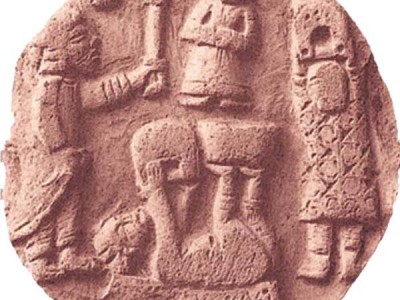


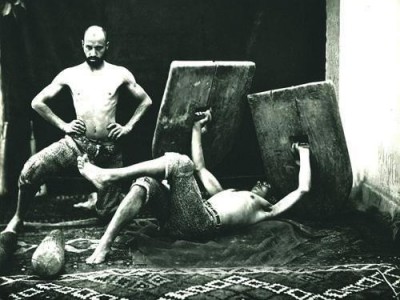
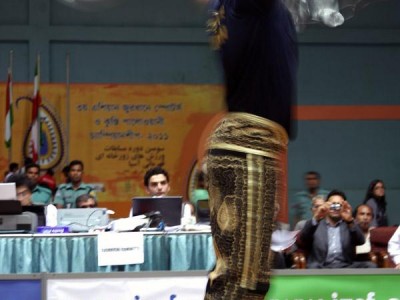
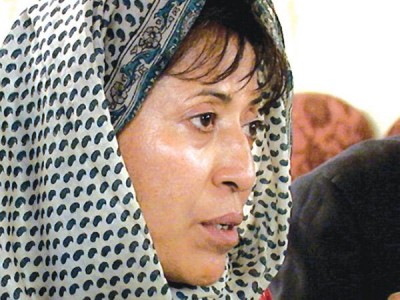


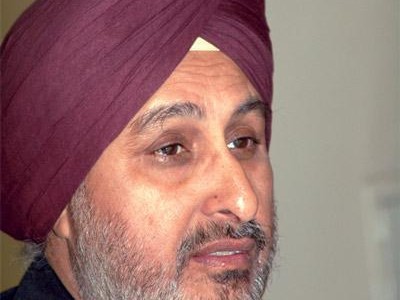
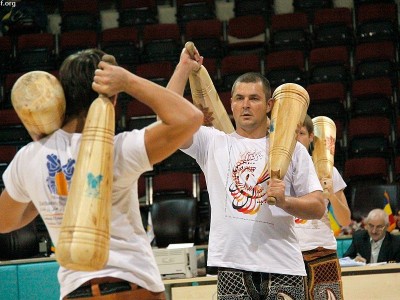
Contact Us
International Zurkhaneh Sports and Koshti Pahlavani Federation
Address: Iran, Tehran, Artesh Highway, Mini City, Naft Town, Suleiman Mosque Square, Sarai Mahalle Corner, Zorkhaneh Shahadai, Naft Town,
Postal Code: 1955673172
Contact number: 22495935
Subscribe now
Do not miss our latest news and reports.
Zorkhane is the house of strength, the ritual of hard work, cultivating the spirit of generosity, chivalry, patriotism and a combination of sports, art and politeness.
The traditional sport of Zorkhaneh is the sport of values. In its thousands of years of history, this traditional sport has played an important role in people's strength and physical and mental fitness. Zorkhane sport is a cultural and spiritual heritage and a good source for the development of public sports.
